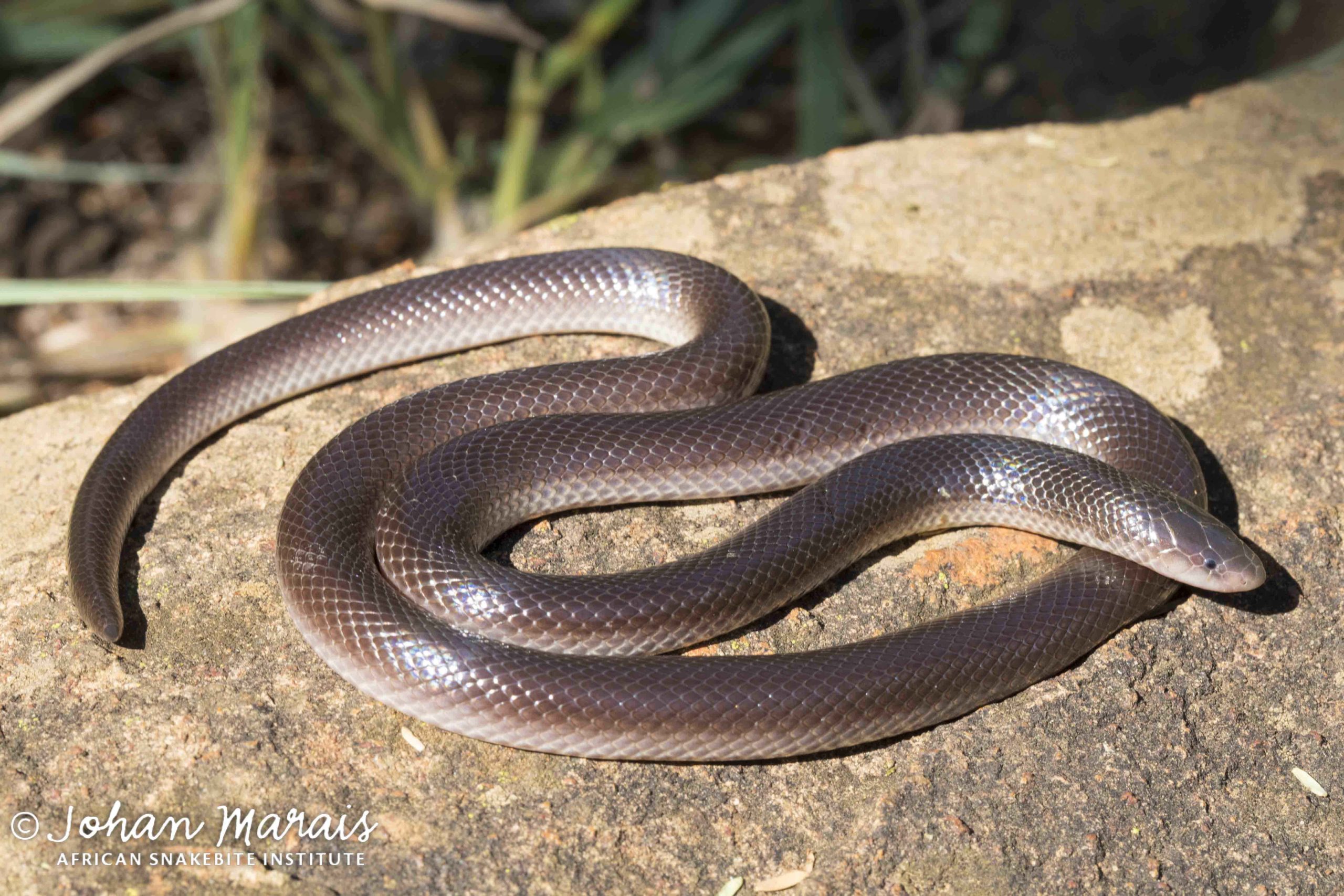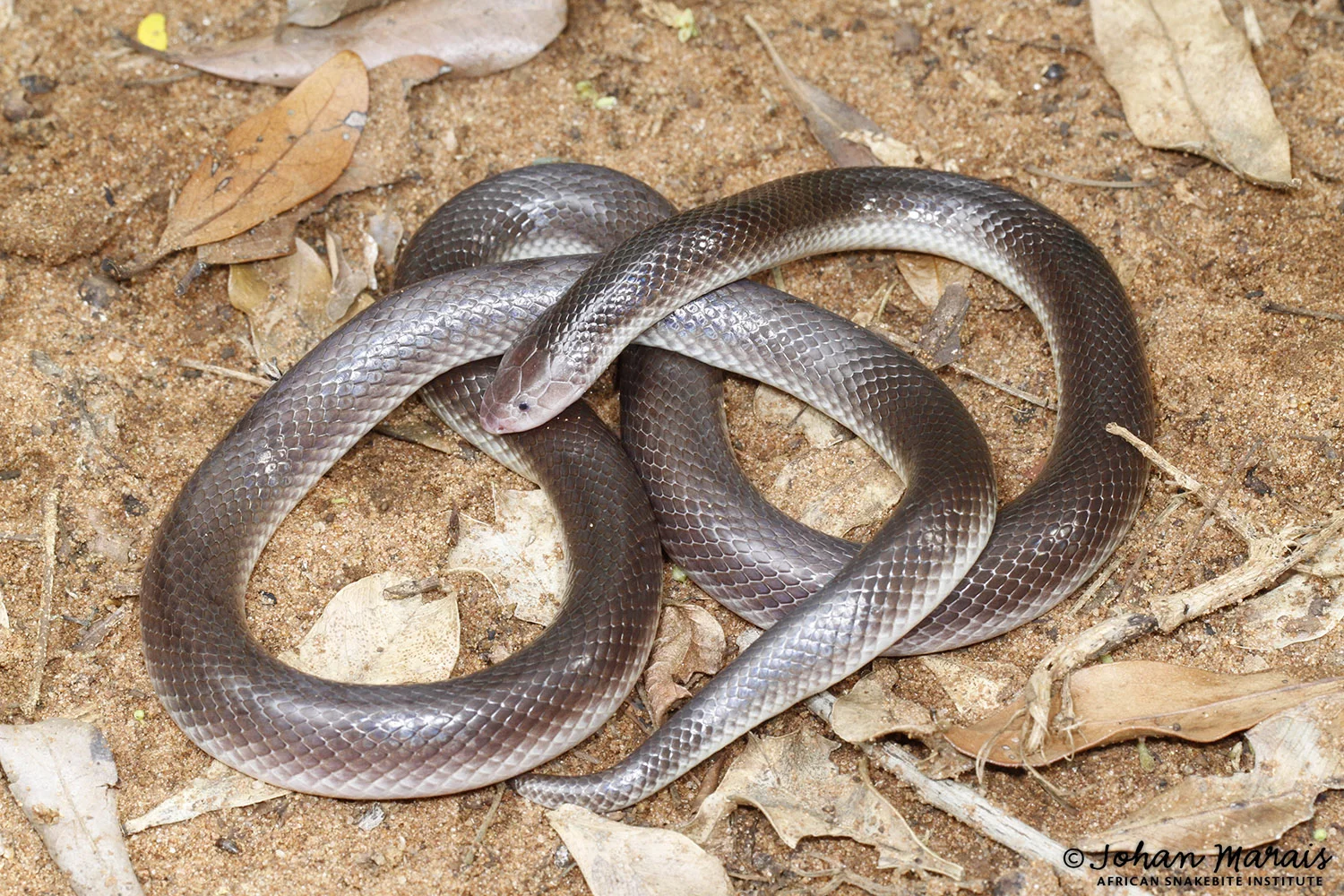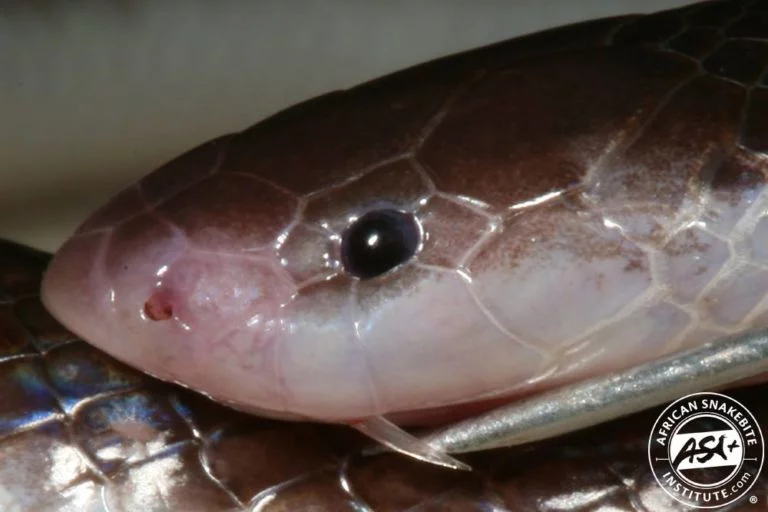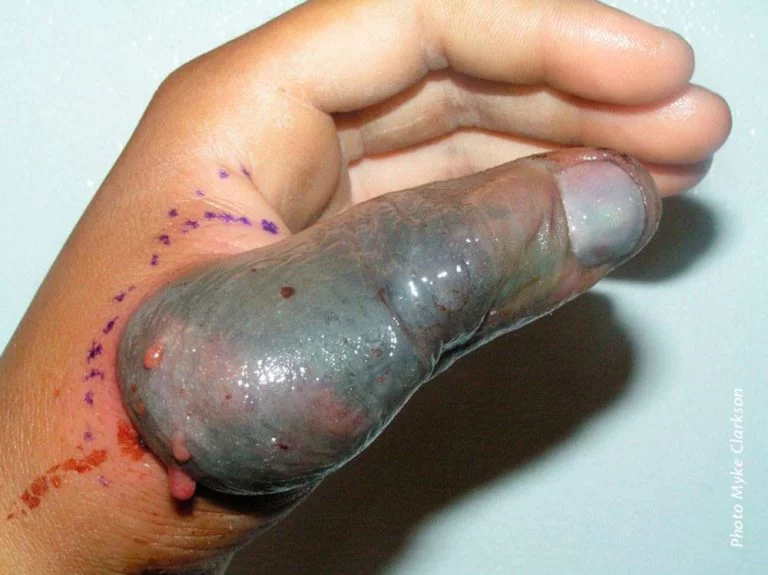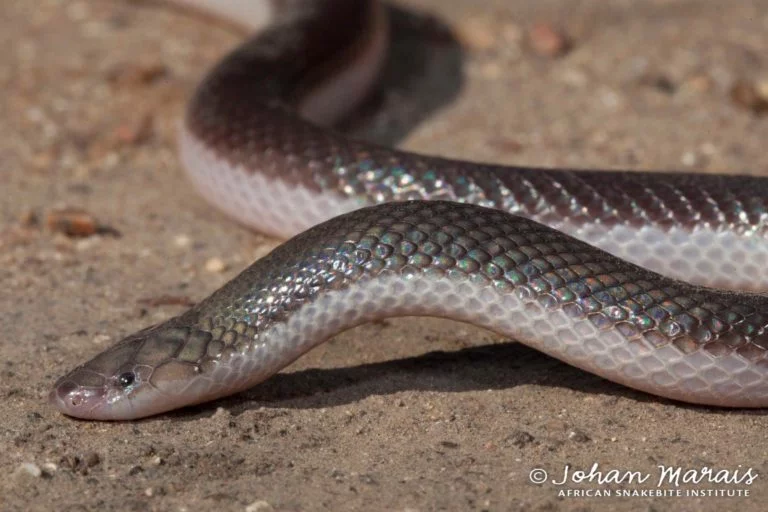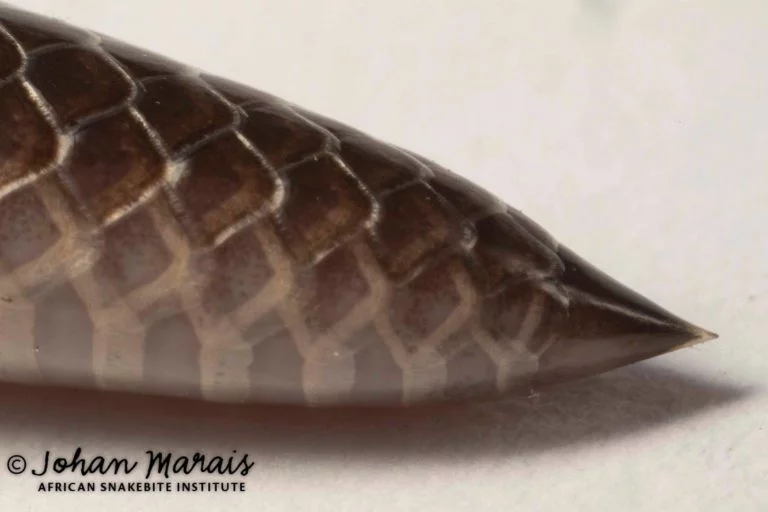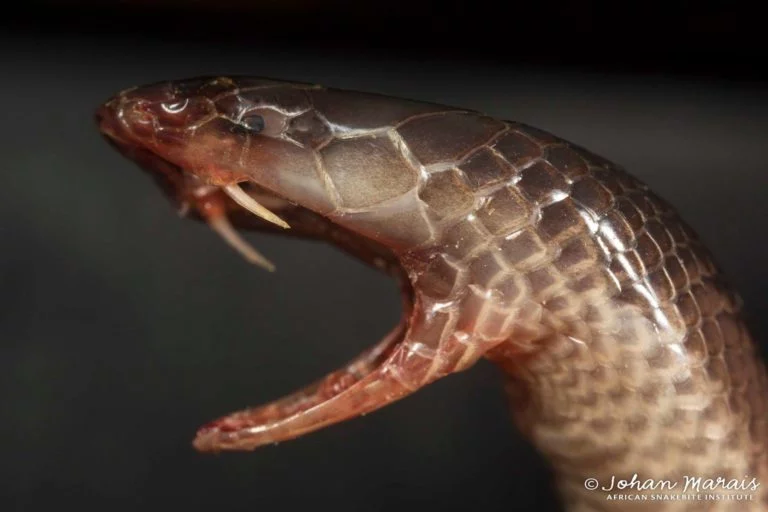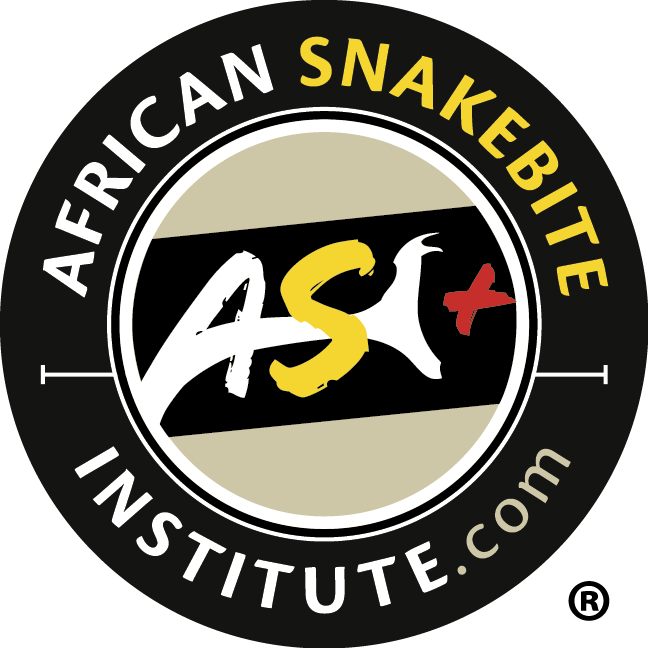The Stiletto Snake or Sypikslang (Atractaspis bibronii), is a small, highly venomous snake, that accounts for numerous snakebites during the summer months in Southern Africa. Previously known as a Mole Adder or Moladder, these dark snakes are often confused with harmless-looking snakes, and people tend to pick them up with their hands – the consequences of such a mistake can be very painful.


